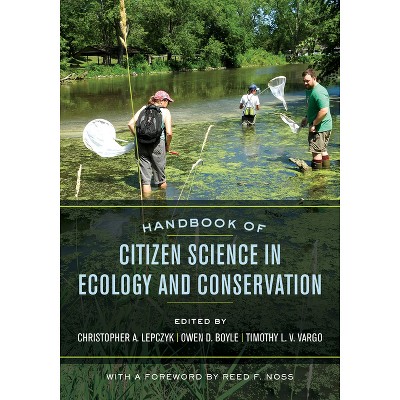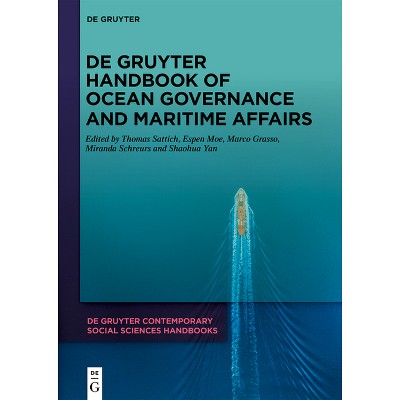Handbook of Water Harvesting and Conservation - (New York Academy of Sciences) by Saeid Eslamian & Faezeh Eslamian (Hardcover)

About this item
Highlights
- Water harvesting is gaining more and more recognition as a sustainable and resilient water supply options.
- About the Author: SAEID ESLAMIAN, Isfahan University of Technology.
- 528 Pages
- Technology, Environmental
- Series Name: New York Academy of Sciences
Description
About the Book
Also edited by: Faezeh Eslamian (McGill University).Book Synopsis
Water harvesting is gaining more and more recognition as a sustainable and resilient water supply options. It is economically viable, socially compatible and environmentally friendly. Water harvesting has proven to be a robust solution to overcome or reduce water shortages all over the world. It is important to understand how to apply this practice in a sustainable and effective way to make full use of its potential in a world increasingly threatened by water scarcity.
The Handbook of Water Harvesting and Conservation: Basic Concepts and Fundamentals is the most comprehensive, up-to-date and applied handbook on water harvesting and conservation yet published. The book's 30 chapters -- written by 84 outstanding international experts from approximately 20 selected countries faced by drought -- explore, critique and develop concepts and systems for water harvesting. The editors bring together many perspectives into a synthesis that is both academically based and practical in its potential applications.
The Handbook of Water Harvesting and Conservation: Basic Concepts and Fundamentals is an important tool for education, research and technical works in the areas of soil, water and watershed management and is highly useful for drought strategy planning, flood management and developing techniques to adapt to climate change in urban, agricultural, forest and rangeland areas.
From the Back Cover
HANDBOOK OF WATER HARVESTING AND CONSERVATION
BASIC CONCEPTS AND FUNDAMENTALS
Water harvesting is gaining more and more recognition as a sustainable and resilient water supply options. It is economically viable, socially compatible and environmentally friendly. Water harvesting has proven to be a robust solution to overcome or reduce water shortages all over the world. It is important to understand how to apply this practice in a sustainable and effective way to make full use of its potential in a world increasingly threatened by water scarcity.
The Handbook of Water Harvesting and Conservation: Basic Concepts and Fundamentals is the most comprehensive, up-to-date and applied handbook on water harvesting and conservation yet published. The book's 30 chapters--written by 84 outstanding international experts from approximately 20 selected countries faced by drought--explore, critique and develop concepts and systems for water harvesting. The editors bring together many perspectives into a synthesis that is both academically based and practical in its potential applications.
The Handbook of Water Harvesting and Conservation: Basic Concepts and Fundamentals is an important tool for education, research and technical works in the areas of soil, water and watershed management and is highly useful for drought strategy planning, flood management and developing techniques to adapt to climate change in urban, agricultural, forest and rangeland areas.
About the Author
SAEID ESLAMIAN, Isfahan University of Technology.
FAEZEH ESLAMIAN, McGill University.











